Spinal osteocondrosis -This is a chronic dystrophic disease in which the intervertebral of the cartilage disk and vertebrae deforms.Recently, you need to hear more and more often about this disease.And that's not surprising, because if former osteocondrosis was considered a pathology for older people, it has now been very "younger".We live in an era of scientific and technological progress-we have elevators and escalators, transport and means of communication that allow you to quickly transfer information and apply a minimum of physical efforts to this.As a result, for speed and comfort, we pay our spine health.But don't despair, osteocondrosis is not a phrase.Let's find out what changes occur in the spine with osteocondrosis, how it manifests itself, and we will analyze modern methods for treating this condition.
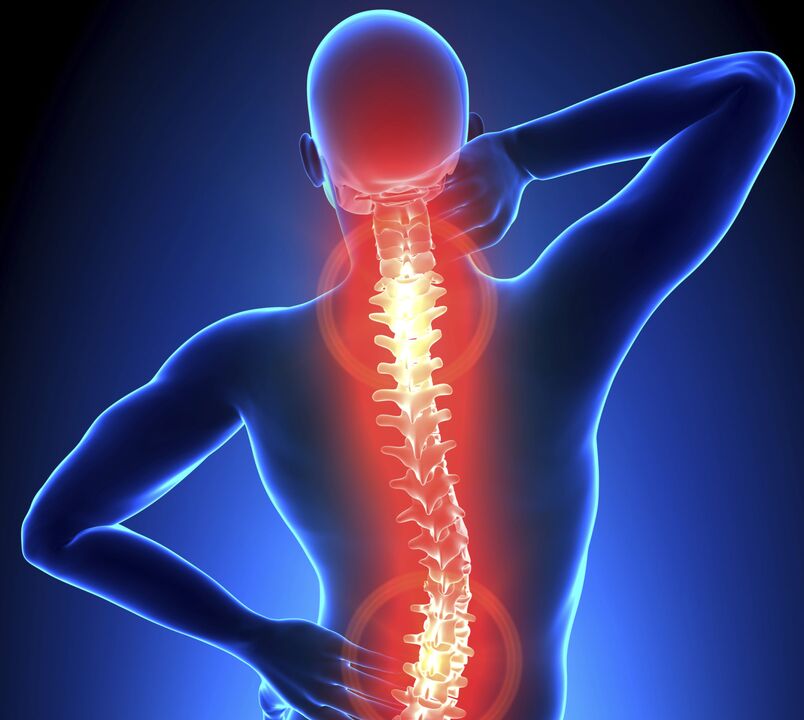
Spine osteochondrosis: Causes
The spine consists of vertebrae associated with cartilage intervertebral disks.They serve as a shock absorber and provide elasticity and mobility of the spine.
Our body grows up to 20-25 years.At this point, the intervertebral disc is equipped with blood vessels with which active nutrition occurs.After stopping growth, the blood supply stops.Next, the disk receives force from adjacent tissue, mainly from muscles.Disks eat like a fungus when compressed, they give the metabolic products and with stretching they absorb nutrients.If the intervertebral disk does not receive adequate power, it starts to collapse.
Consider the causes of osteocondrosis of the spine:
- A sedentary lifestyle.We already know that the cartilage disk is fed when you compress and stretch and for this the spine must be moved.
- Forced pose.This applies to office workers and drivers because a prolonged sitting that leans forward leads to an uneven load on the spine.Imagine that the entire fair of the upper body is not pressure on the entire counter daily, but at certain points.The force of cartilage tissue at these points is disturbed, leading to its destruction.
Prolonged sitting at the computer, when tilted forward, increases the load on the spine by 50-70%.
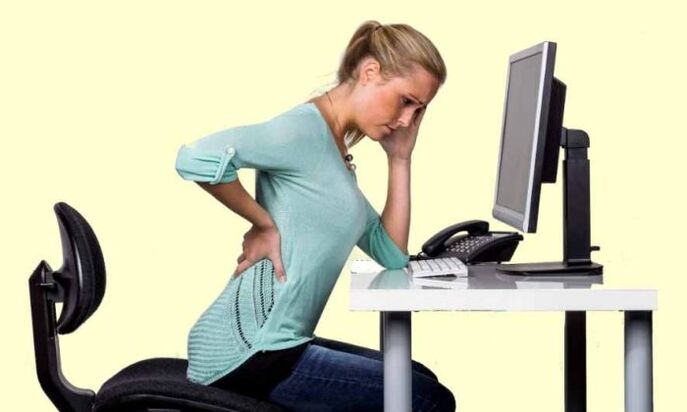
- Excessive physical activity.In addition to the load on the spine, muscle tension occurs as a result of the blood circulation of the muscles disturbing and the intervertebral slice does not receive the necessary nutrition.
- Incorrect attitude.A sustained change in spinal configuration overloads the intervertebral disks.
- Obesity.Excess mass of the upper body has a load on the spine.
- Age -related changes.This is a natural process, as a result of the metabolic processes with cartilage and bone tissue brakes.
Changes in the spine with osteocondrosis
Osteocondrosis of the spine is characterized by a violation of nutrition (trophism) of the intervertebral disks.First and foremost, the shape of the disk changes - it protrudes towards the spinal canal.If the stabbing in the intervertebral disk occurs without fracture of the fibrous cryjeling, this condition is calledProhibition.This is one of the stages of osteochondrosis of the spine.The next step is the fracture of the fibrous-crawl shot ring accompanied by a shift of the eaded core of the intervertebral slice.So formedIntervertebral hernia.
The bone tissue in the vertebrae is also involved in the process.It grows and forms the so -called osteophytes or bones.They compensate for the load on the spine while limiting the movement.
Often, oste -huts are called "sale".In fact, there are no salts.These are bone manations that of course do not work using massage and manual techniques.
The muscles for osteocondrosis are also exposed to certain changes.To keep the deformed spine in a normal position, they are in a state of constant tension.Muscle cramps for osteocondrosis are accompanied by pain and further exacerbate the trophic structures of the spine.
A change in the form of spine structures leads to a displacement of the vertebrae and intervertebral disks.In this case, compression (compression) occurs of radicular nerves.They become inflamed and cause severe pain.
Osteocondrosis of the spine with radicular syndrome is manifested by pain in the legs, arms, chest and internal organs - the heart, lungs, stomach, intestine, kidneys, etc. Emotional weapons, legs, face and tongue for osteochondrosis - is also a sign of compaction of the radical nerves.
Symptoms of spine -osteocondrosis
Whatever the spine is involved in the pathological process, the disease is manifested by two main symptoms - pain and limitation of the movement of both the spine and the limbs.
Symptoms of osteocondrosis in cervical spine
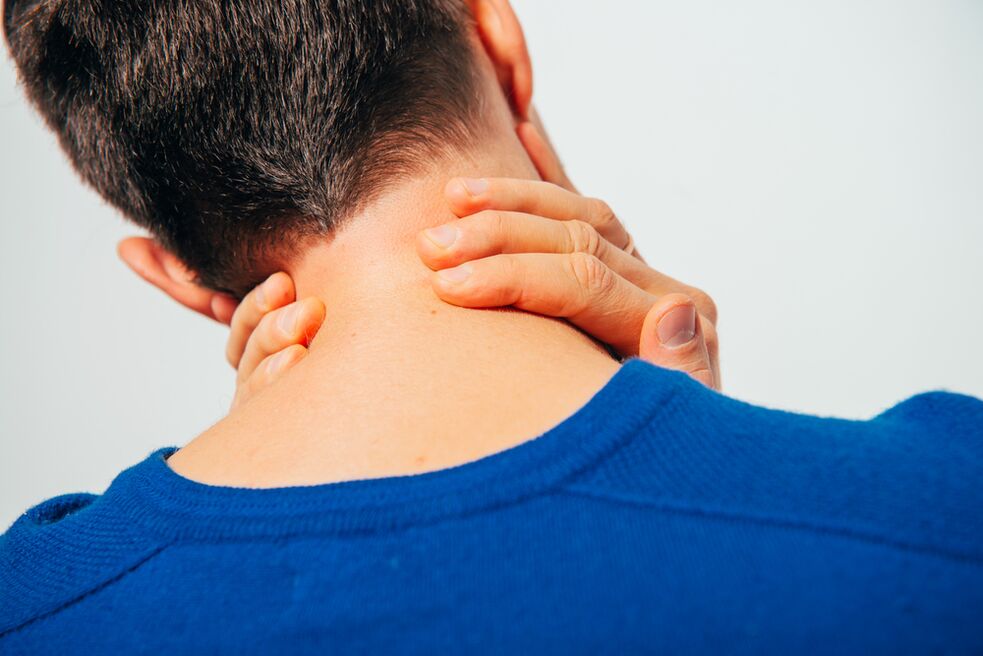
The cervical vertebrae are the smallest and most mobile.In addition, blood vessels that feed the brain pass through them.Therefore, the cervical spine is considered the most vulnerable.Osteocondrosis in the cervical region is manifested by characteristic symptoms:
- The pain in the neck that can be given at the back of the head, shoulders, spatula.Pain intensifies when tilting your head;
- Headaches, dizziness, noise and ringing in the ears.Based on the disease, flax reduction is possible;
Headaches for osteocondrosis are a fairly common occurrence.People suffering from systematic headaches should necessarily be examined by a neuropathologist.According to statistics, the cause of headaches in 30% of cases of headache is cervical osteocondrosis.
- Pain in the hands and chest.Limitation of hand movements;
- Violation of coordination of movements;
- In some cases, vision and speech suffer;
- Rising blood pressure.
The syndrome of the spine with cervical osteocondrosis is a complex of symptoms to be aware of.The rumored rumor of artery nourishes the brain and when compressed, its blood circulation is disturbed.Vertebral arterial syndrome with cervical osteocondrosis has the following signs:If you have these symptoms, you are urgent to contact a neurologist.Vertebral arterial syndrome is the most common cause of stroke at a young age.
- Noise in the ears;
- Headache, dizziness;
- Tachycardia (rapid heartbeat);
- Visual violation, the appearance of "flies" for the eyes;
- Loss of consciousness.
Symptoms of osteocondrosis of the thoracic back
Thorax spine is less mobile than cervical or lumbar.In this regard, healing it is more difficult.In the thoracic cavity there are important organs - the heart, large blood vessels and lungs, so the symptoms of osteocondrosis in the thorax region can be confused with diseases of the chest cavity.
Signs of osteocondrosis of the thoracic back:
- The sore pain between the shoulder blades and in the breast area.The pain is intensified after a long stay in a forced position or under physical exertion;
- Pain and stiffness of movements during breathing;
- Pain between the ribs (intercostal neuralgia);
- Numbness of the skin, the feeling of "goosebumps";
- Pain can cause the heart, lungs, abdomen and kidneys;
- Limitation of movement under inclinations, raises the body's hands and turns.
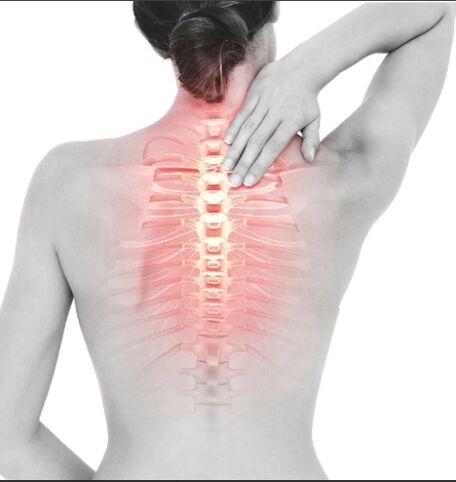
How does one distinguish osteocondrosis of the spine from heart pain?
Pain for osteocondrosis of the thoracic back can be so intense that you can easily suspect heart disease.Let's look at how osteocondrosis differs from pain in the heart with angina pectoris:
- The duration of pain.With osteocondrosis of the spine, the pain can last days and weeks, and with angina pectoris - up to 10 minutes.
- Moving (ending) of pain.With angina pectoris, the pain of nitroglycerin is stopped, and with osteocondrosis, painkillers are effective - diclofenac, meloxicam, etc.
- Changes to ECG are characteristic of heart pathology and with osteocondrosis ECG normal.
Symptoms of osteocondrosis in the lumbar spine
Lumbar spine is most susceptible to physical exertion.Any of our household level activity somehow involves this part of the spine.Almost everyone was facing pain in the crucifix, and this is the most common symptom they are looking for a doctor for help.
Signs of osteocondrosis in the lumbar spine:
- Back pain with the back, "shot" during physical exertion and with a long -term forced position.Pain in osteocondrosis in the lumbar area is combined by the expressionRadiculitis.
- Violation of the work of the Genitourinarian authorities.Pain in the kidney area, difficulties in urinating.Women may have a violation of the menstrual cycle, ovarian pain and uterus, and men have strength problems.
- Pain in the buttocks, hips, lower legs and feet.Violation of the sensitivity of the legs, tingling, numbness.
- With prolonged compression of the nerve roots and blood vessels, icepering lameness can develop.When he goes, a person begins to limp and he has to stop and relax.
Treatment of osteocondrosis of the spine
After treating the symptoms of osteocondrosis, a logical question arises - what to do next, how to handle osteochondrosis?Fortunately, we will cure osteocondrosis.With a small reservation - with timely treatment and desire to participate in your health.And a lot in our hands.Like any chronic disease, spinal osteochondrosis is treated for a long time.Hope not you can get rid of symptoms in a week.
Currently, conservative treatment is practicing actively, which includes a whole series of measures.The most important thing that the patient needs to understand is treated passively.With severe pain, you get prescribed pain medication and anti -inflammatory drugs as well as muscle relaxants.But in some cases you can do without medication.Let's look at the treatment methods used to treat osteocondrosis.
Preparations to treat spine -osteocondrosis
- Non -steroidal anti -inflammatory drugs (NSAIDs).These drugs will help relieve pain and inflammation.They are used in the form of injections, tablets and local products - gels or ointments.It is necessary to keep in mind that non -steroidal anti -inflammatory drugs to treat osteocondrosis cannot be taken in time as they can lead to gastritis and ulcers.
- Musorelaxants- A group of drugs that relieve muscle tension, thereby reducing the load on the spine and improving their blood circulation.They relieve muscle spasm with osteocondrosis of the spine.Work most effectively in combination with NSAIDs.
- Chondroprotectors- Restore and protect cartilage from destruction.They are elements in the structure of articular cartilage (derivatives of hyaluronic acid).They are used in the form of tablets, intramuscular and intra -fast.Their significant minus is a rather long treatment.The optimal course is 6 months.Not every patient is able to obediently comply with recommendations all this time.
- Vasodilative drugsFor osteocondrosis, it is used to improve blood circulation.
It is worth noting that any medical drug only removes pain with osteocondrosis but does not heal the problem.Medicine will not put the vertebrae and intervertebral disks in place and will not return the previous anatomical structure to them.
Non -Eve methods for treating osteocondrosis
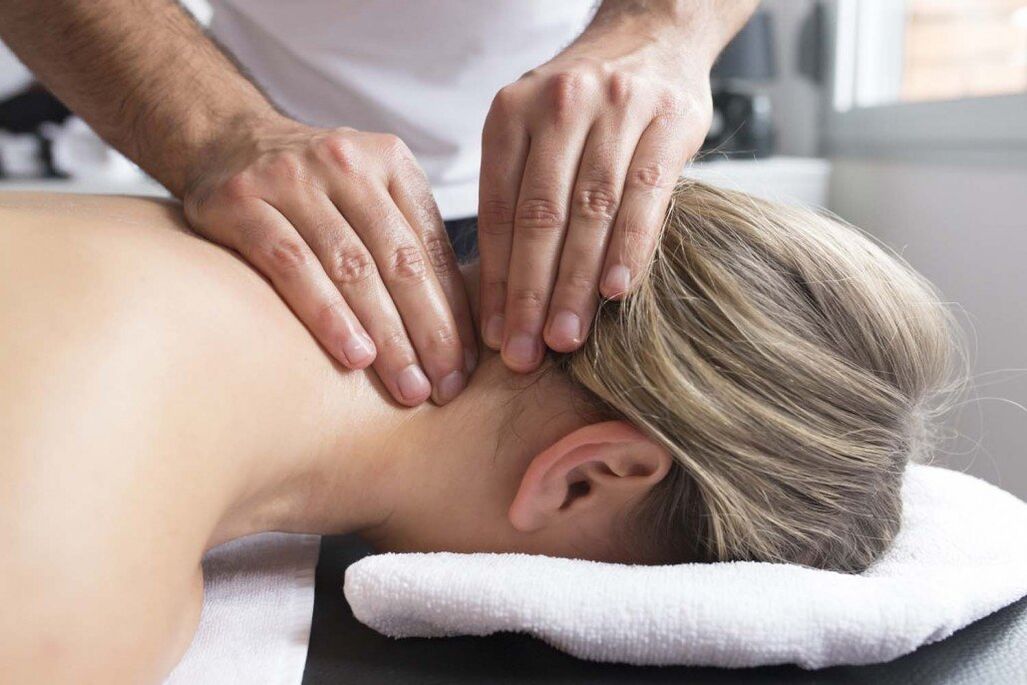
- Massage.The massage's most important task for osteocondrosis of the spine is to relieve muscle spasm and increase blood flow.Thus, the nutrition of cartilage, the edema decreases, the pain subsides, the movement of the joints is restored.Massage unfortunately gives a temporary effect.We know that with osteocondrosis there are changes in the spine, so it will not work to restore it completely.Furthermore, if osteophytes are already formed, which are confused with "salt deposits".
- Manual therapy.In the past, this method of treating osteocondrosis was quite skeptical.However, a major clinical study conducted in 2017 showed the effectiveness of manual therapy.Nevertheless, manual therapy for osteochondrosis should be taken extremely carefully.First of all, create an MRI to determine the exact place of damage.Many manual therapists act intuitively without certain knowledge and skills.But this is not the case where it is necessary to play intuition, especially with Intervertebral Hernias.The manual therapist with an extractable approach can harm more than the disease itself, so before making a decision on the course of such procedures, take responsibility for the search for a specialist.
- Medical Physical Exercise (Exercise Therapy)- Perhaps the most effective method of treating osteocondrosis.Since this disease is usually a consequence of a lack of amount of spine, physical exercises are what you need!The specialist chooses a set of exercises and monitors their implementation.In order to maintain the effect after the training course, it is necessary to continue the exercises.You can choose a sport suitable for people with osteochondrosis.An ideal option for osteocondrosis of the spine is to swim, yoga and pilates.It is good to hang on the horizontal beam several times a week (if there are no contraindications).Stretching exercises help "pull out" the spine and relax the tense muscles.
Not every sport is indicated for osteocondrosis.For example, running can aggravate the disease.Therefore, before making this or decision, it is advisable to consult a physiotherapy specialist.
And of course you have to think about changing your lifestyle.Osteochondrosis is a chronic disease respectively, it is necessary to treat for a long time.Medication or massage does not return the spine with an untouched look and this must be united.And this means that not only is it necessary to perform special exercises, but also to adjust some of your habits.
Prevention of osteocondrosis of the spine
- First of all, it is necessary to pay attention to your workplace.If you are working on sitting, try to avoid the tilt forward.The chair should be with a hard back and a lumbar bend.
- Follow the attitude.It is not only beautiful, but also good for health.
- Try not to lift weights.If necessary, put a special bandage or a corset on the back.
- If the cause of the spine osteocondrosis has become excess weight, you will need to get rid of extra pounds.
The spine is in our hands!













































